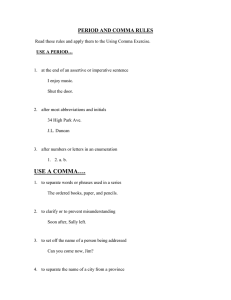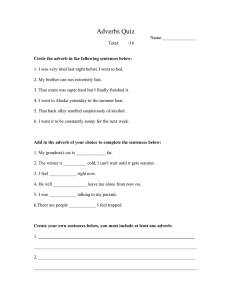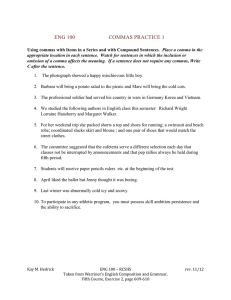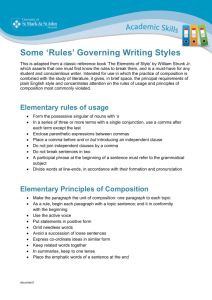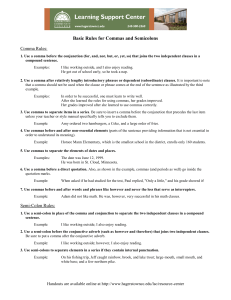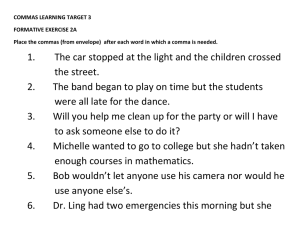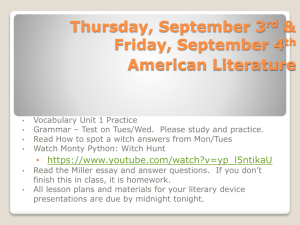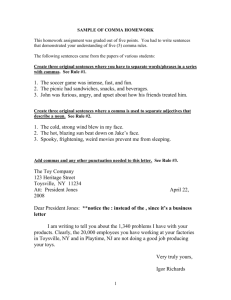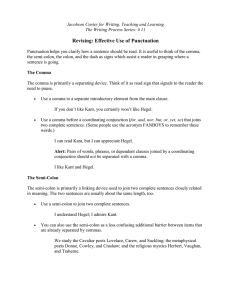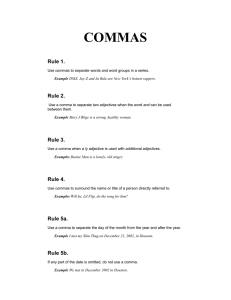Commas A comma is a punctuation mark that indicates a separation... five main ways:
advertisement
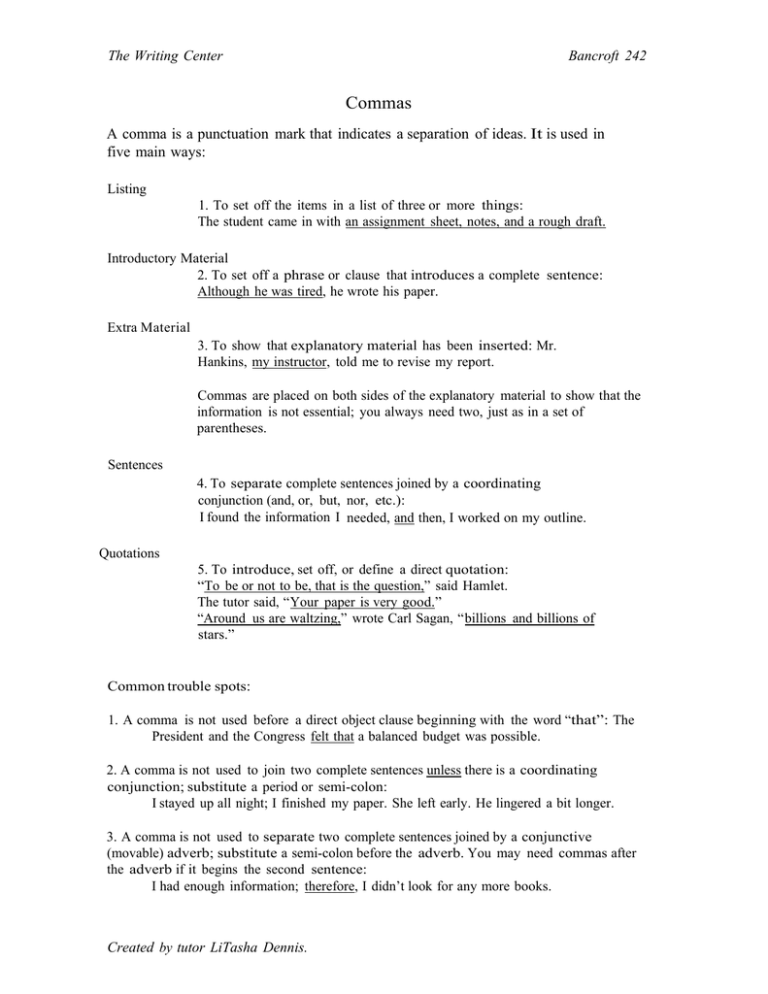
The Writing Center Bancroft 242 Commas A comma is a punctuation mark that indicates a separation of ideas. It is used in five main ways: Listing 1. To set off the items in a list of three or more things: The student came in with an assignment sheet, notes, and a rough draft. Introductory Material 2. To set off a phrase or clause that introduces a complete sentence: Although he was tired, he wrote his paper. Extra Material 3. To show that explanatory material has been inserted: Mr. Hankins, my instructor, told me to revise my report. Commas are placed on both sides of the explanatory material to show that the information is not essential; you always need two, just as in a set of parentheses. Sentences 4. To separate complete sentences joined by a coordinating conjunction (and, or, but, nor, etc.): I found the information I needed, and then, I worked on my outline. Quotations 5. To introduce, set off, or define a direct quotation: “To be or not to be, that is the question,” said Hamlet. The tutor said, “Your paper is very good.” “Around us are waltzing,” wrote Carl Sagan, “billions and billions of stars.” Common trouble spots: 1. A comma is not used before a direct object clause beginning with the word “that”: The President and the Congress felt that a balanced budget was possible. 2. A comma is not used to join two complete sentences unless there is a coordinating conjunction; substitute a period or semi-colon: I stayed up all night; I finished my paper. She left early. He lingered a bit longer. 3. A comma is not used to separate two complete sentences joined by a conjunctive (movable) adverb; substitute a semi-colon before the adverb. You may need commas after the adverb if it begins the second sentence: I had enough information; therefore, I didn’t look for any more books. Created by tutor LiTasha Dennis.
